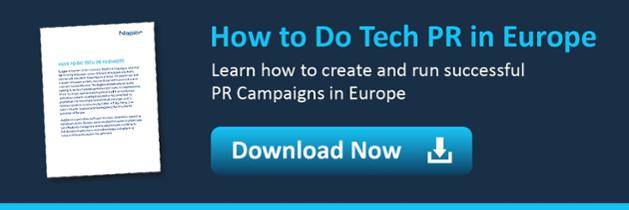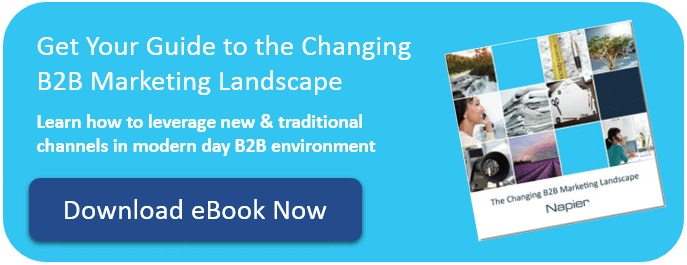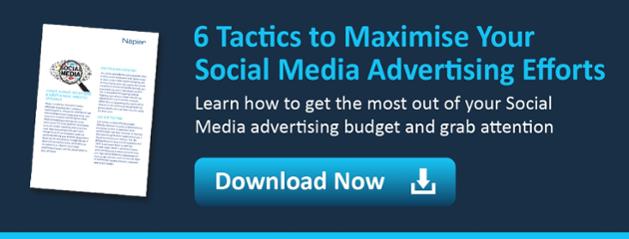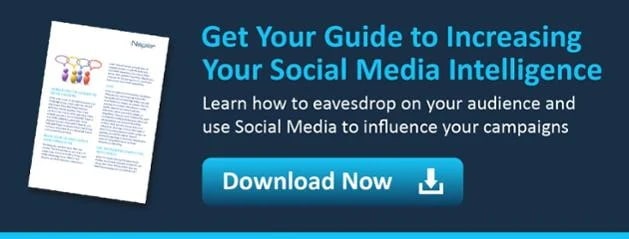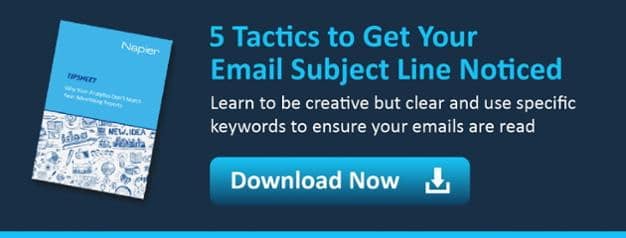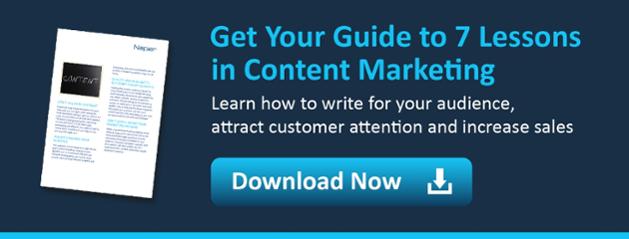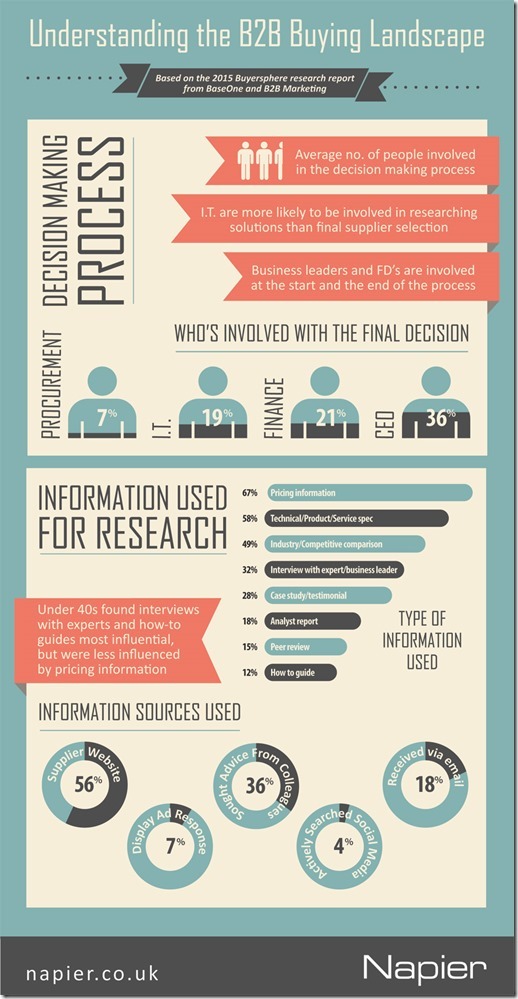The Biggest European PR Mistakes US Brands Make
Let’s get straight to it. Europe consists of 51 countries and 23 official languages (not to mention the additional 60 unofficial languages), many cultural differences and various time-zones. With this in mind, anything other than a tailored European approach will only lead you down one road; failure.
The fact is an effective pan-European PR strategy can most definitely be achieved. At Napier, we work with clients that reach all corners of the continent through their campaigns, but the one thing each of these clients have in common is that understand the European landscape and avoid the biggest European PR mistakes that many brands make. Below we’ve compiled a list of the most common European PR mistakes you should avoid to ensure you achieve success across Europe.
Ignoring Public Holidays
The European public holiday calendar can be a bit of a minefield, but it is a minefield that needs to be adhered too. It’s important to remember that not all holidays are national across Europe; just because Germany are celebrating a public holiday, the UK may be running as normal. The point is, as long as you consider these holidays when planning for campaigns, you are unlikely to fall into any problems. That said, it is important that you don’t forget bridging days, as many journalists and customers will often extend their vacation period. It’s also worth considering that the European media tends to slow down in July and August, as many Europeans take holidays in these months, and this should be taken into account when co-ordinating news globally.
One Size Fits All
This sort of approach will lead to nothing less than failure. There are a whole range of legislation differences, and industry challenges in each European market, and thinking what works for one will work for the other, just won’t cut it. Instead, tailor your brand messaging in a way that resonates with the challenges and requirements for each target market, and ensure you are targeting the right audience with the right messaging, at the right time.
Ignoring Local Spokespeople
Another common PR mistake that US brands make in Europe, is in fact having a lack of European presence. While journalists across Europe value meeting with CEOs, it should be noted that they really care about local spokespeople, therefore these spokespeople shouldn’t be ignored.
Translating Without Localisation
Here’s the thing, translation itself is not enough. Certain words in different languages may have different meanings, depending on usage and context, and your marketing communications must reflect this. This is why it is crucial to have local translators on board, ensuring your messaging is consistent. Failing this, you risk damaging not only your campaigns, but more even worse your brand’s reputation in that market.
Failing to Value the Importance of Relationships
Establishing and developing relationships with the European media should be an integral part of your European PR strategy, and you should avoid a ‘seagull PR’ approach. The fact is, coming over to Europe, shouting about a release, and then leaving and failing to maintain contact with the journalists is one of the biggest mistakes you can make when it comes European PR. Effective media relations is still a huge part of any successful PR strategy, but it is a two way relationship, and you must therefore build genuine, long-lasting relationships with the European media.
For further insight and best practices for doing technology PR in Europe, download our guide to planning and implementing a successful European PR strategy.
Preparing your CEO for European Media Interviews
Cultural differences across Europe can have a significant impact on your European PR strategy, and research conducted by the Public Relations Global Network (PRGN) highlights just how costly cultural ignorance can be for a CEO and their company. It’s important to remember that the European media operates in a completely different way to the US media, and not only that, but the media from country to country across Europe will also differ immensely. Here we have compiled some of the key findings from the report, to provide some guidance about the requirements and habits of European journalists, and ultimately what a CEO should expect from European media interviews;
Convince European Journalists of Your Deep Market Insight
92% of European journalists believe that the most important characteristic and skill of a CEO is their knowledge of the company and market, so it is important to demonstrate extensive knowledge of the market. You should also be aware of just how much the personality of the CEO or spokesperson impacts media judgement (86%), as well as the fact that their overall track record and performance is important to 72% of journalists across Europe.
European editors are typically more accommodating with regards to their interview subjects
When it comes to the European media, it was found that 41% allowed the CEO or the company’s PR agency to review the CEO’s quotes prior to publishing, and 21% even allowed them to review the entire article, although this is often dependant on the relationship the editor has with the company or agency. That said, this will vary from country to country, and is expected more in Germany, the Netherlands, Poland and Denmark, whereas editors in the UK, Ireland, Italy, Spain and Portugal will be far less willing.
Failing to answer critical questions will have negative implications
73% of European journalists believe that failure to answer key questions is a major no-go, and unsurprisingly, arrogant behaviour is also a common interview pitfall and won’t go down well, particularly with Spanish journalists (94%). 62% of European journalists also strongly dislike CEO’s talking in platitudes.
European journalists will be strongly influenced by past media interviews
Swiss journalists rely primarily on past media coverage when preparing for an interview with a CEO (94%), and although this is significantly higher than the 58% European average, it is important to be well informed about what has previously been written about you and the company as a whole, as these journalists will try to elicit additional information from you. You should also remember what you have said in previous interviews.
British journalists prefer to conduct interviews by phone
While European journalists in general prefer face-to-face interviews, specifically 67% like these interviews to be held at the company’s office, whereas 55% like to meet in public places such as a bar or restaurant. Alternatively, British journalists prefer to conduct interviews by phone, with only 33% preferring to meet in person.
For insightful tips and best practices for doing technology PR in Europe and effectively managing European media interviews, download our guide to planning and implementing a successful European PR strategy.
Four Things to Consider When Doing Technology PR in Europe
For many US tech brands that have mastered their homeland, the next big frontier is often Europe. But how many of these companies actually see success in this diverse continent? Not all of them. While European growth is part of many organisations strategies, success can only be achieved if you can acknowledge and adhere to local standards and expectations. With that in mind, here are our top four things to consider when doing technology PR in Europe.
Understand the European Landscape
When it comes to the Europe, just about everything can differ, from language and culture to typical vacation periods and social media preferences. To understand the European landscape, however, you must look beyond the cultural differences, language barriers and translation requirements (as important as they all are), and gain a thorough understanding of the individual countries and regions you wish to target, and the strategy required to establish a presence in each.
Don’t Run Before You Can Walk
Prioritisation is key, and for any company looking to establish a presence in Europe, it’s crucial that you don’t run before you can walk. Start by defining which countries are most important to you, and are most in line with your business objectives. You may well be dealing with limited budget and resources, therefore, once you’ve began to increase awareness in your core market(s), it may be that you choose to focus on additional European countries on an ad-hoc basis. A solely pragmatic approach would be to initially establish a presence in the UK, followed by Germany and then France, but this will ultimately depend on your industry.
Style of Press Releases are Different
Another area that shouldn’t be overlooked is the style of press releases. While journalists across Europe typically prefer shorter press releases, than American journalists, the preferred style of press releases differ further from country to country. As an example, Germans will look for lots of facts and figures, although journalists from across Europe all want case studies originating from their specific country.
Effective Communication is Paramount to European Success
Unfortunately, understanding the region is only the first step for doing technology PR in Europe. The fact is, effective communication is paramount to the success of any European strategy, and it is often overlooked. Realistically, you should consider using European representation, particularly for your PR, and while it’s possible to run a European PR campaign from the States, it is much more beneficial to have someone on the ground, representing your brand. Without local representation, you are challenged with a whole range of time-zone issues, not to mention language barriers and knowledge of the European market.
In order to keep consistency and enhance the success of your European strategy, it is recommended that you conduct regular calls with your agencies and local sales reps, to ensure consistency and provide feedback, as well as to discuss key fundamentals including messaging, the availability of spokespeople, required actions and general distribution information such as the date of an embargo.
For further insight and best practices for doing technology PR in Europe, download our guide to planning and implementing a successful European PR strategy.
Napier Climbs the List in B2B Marketing’s Top Marcomms Agencies and Fastest Growing B2B Agencies League Tables
Having had an incredibly successful year at Napier, following the acquisition of Peter Bush Communications, as well as several client wins and multiple new hires, we’re thrilled to announce that we have been named as both a B2B Marketing top 50 marcomms agency and a top 20 fastest-growing agency in the B2B Marketing League Tables 2015/2016.
It’s great to be recognised as one of the leading European B2B PR and marketing agencies, and we look forward to another successful 12 months!
Freya Ward Named South East Regional Apprentice of the Year 2015

The National Apprenticeship Awards recognises the achievements of outstanding apprentices and the companies that employ them, and we're thrilled that Freya has been selected out of 12,000 applicants, and recognised for the hard work she has done during her apprenticeship.
Since completing her apprenticeship this summer, Freya has joined Napier on a permanent basis as a marketing specialist, supporting our clients in a range of areas including video editing, email marketing, advertising and media relations. She is also studying towards a CIM Certificate in Professional Marketing.
Freya now moves on to compete for the National Apprentice of the Year Award.
Congratulations Freya!
3 Tips for Managing the Changing B2B Buyers Journey
The modern day buyer has far more control over their purchase journey than the vendor has over the selling cycle, a shift in dynamics that has changed the B2B buyers' journey.
The fact is, buyers can be as much as 90% of the way through their purchase journey before they engage with sales, and while this is a challenge for marketers, it also provides an opportunity. Marketers have never had so much customer data available to them, and this insight, coupled with the significant shift towards inbound marketing, opens doors to understanding of our customers and mapping a strategy that allows us to swiftly guide these prospects through their B2B buyers' journey.
Yes, as marketers we no longer hold all the cards, and yes, we must develop enough relevant, high-quality content to rise above the noise, but when this is done effectively we can significantly increase our chances of being shortlisted as a vendor.
With that in mind, here are three tips for managing the changing B2B buyers journey.
Reach buyers earlier in their journey
Unfortunately, you can no longer wait for a potential buyer to contact you, instead you have to make yourself visible. This means producing highly relevant content designed for the awareness stage in the buyers’ decision making process. The B2B buyers’ research process typically begins with search, and therefore search is a critical part of your marketing strategy. Be specific, be relevant and be knowledgeable about the key words your buyers are searching for, and use this insight to drive your SEO strategy.
While search is crucial, there are still a whole other range of channels and tactics that can be leveraged to reach your audience in the early stages of their research. Firstly, search isn’t limited to Google, and you should be considering platforms such as YouTube and SlideShare to engage your prospects. SlideShare is growing as a platform, and has become an important resource for information-gathering, particularly in many verticals. In addition, LinkedIn, Twitter and even, for some B2B brands, Facebook, are all really important for raising brand and product awareness and driving engagement among existing and potential customers, as are blogging, guest blogging, content development and third-party endorsement.
Let your content aid their research
Investing in quality content development shouldn’t be an option, it should drive your entire marketing strategy. The B2B buyers’ journey has changed, and subsequently so have the dynamics of marketing. Regardless of the channels you invest in, and the awareness stages, your content should be developed around providing solutions to their pain points.
This requires understanding their challenges; consider speaking with the sales team to generate insights about target audiences, and where relevant looking at FAQs and ‘listening’ on social media.
To increase your chances of becoming shortlisted, it’s important to be understand what information B2B buyers find valuable. It’s crucial that you are not only able to emphasise the impact of your solution of their business, but also begin to convince them that your solution is worth their consideration in 3-7 seconds. It’s also important to develop content in various formats and lengths, in order to accommodate different content preferences and time constraints.
Optimise your website content
Enhancing user experience should be a key consideration in both the design of your website and the content available on your website, and it has never been more important to the changing B2B buyers journey than it is today. It is in fact this content, coupled with an effective marketing automation strategy, that successfully guides your buyers through their decision making process.
There are, however, several things to consider when it comes to optimising your website content for B2B buyers. Regardless of how a prospect arrives on your website, the fact is they are there, so don’t lose them on the first page. One of the biggest reasons that buyers leave a potential vendor’s website is simply a lack of clear messaging: in other words they don’t quite know what the company does. Make sure you’re clear, concise, engaging and informative in your short-form messaging. Additionally, avoid overwhelming your audience with too much information, instead layer your content in a way that enables users to drill down to more specific information as and when needed.
For more insight into the changing B2B buyers’ journey, and how to address this shift in buyer behaviour, download our guide to the Changing B2B Marketing Landscape.
The Latest B2B Tech Trends to Watch
As the technology available to marketers continues to grow at an unprecedented rate, it becomes more and more challenging for brands to identify which tactics they should be adopting.
Despite this challenge, marketers must remain up-to-date with the latest and greatest tech trends and tactics in the B2B space, and having combined our current insights, here are what we perceive to be the three latest B2B tech trends you should be watching.
Data
The abundance of available data has transformed the way that we, as marketers, can access and analyse customer information, and generate insights to formulate future decisions.
Despite having access to a staggering amount of information, however, the challenge for many marketers lies in gaining value from it. With data fuelling the marketing technologies that organisations are becoming heavily reliant on – CRM, marketing automation etc. – there has become a subsequent requirement for high quality data to drive accurate decision making. As a result, data-as-a-service (DaaS) has emerged as an alternative to static list purchases, with the capabilities to obtain, validate and input data into marketing automation platforms, meaning that marketers no longer have to buy these prospecting lists, which expire very quickly. DaaS additionally reduces email bounce-back rates, improves segmentation, and feeds a far more accurate sales and marketing data process, and as a B2B tech trend it is expected that DaaS will continue to develop, providing full integration with CEM, marketing automation and predictive analytics platforms.
Hyper-Targeting
Hyper-targeting, or extreme targeting, has emerged as one of the next big frontiers among B2B marketers. While the breadth of data makes personalisation a reality, hyper-targeting leverages analytics to deliver the right message,
Only last month, Google announced their plans to let marketers target ads to specific people who use their email addresses when they use the search engine, Gmail or YouTube. This tool called Customer Match, will enable specific ads to be targeted at a brand’s existing customers, with the opportunity to tailor messaging based on their purchase histories or additional information. In addition, marketers will be able to use a tool called “Similar Audiences”, allowing them to serve ads to users who exhibit similar behaviours to their existing customers.
Another B2B tech trend to watch is account-based marketing (ABM). ABM has become a popular approach to hyper-targeting, with marketers leveraging its ability to target their marketing (largely online advertising) to an account level, as opposed to a typical individual level. For larger companies in particular, there are often as many as seven people involved in a technology purchase, and account-based marketing enables you to reach all of these buyers, on the channels they are using regularly, through IP-based targeting.
Storytelling
Crafting engaging and compelling stories in this digital era requires a tactful approach, executed with social in mind. The best B2B brands have, and continue to adopt storytelling techniques, in order to elicit an emotional response from their audience and drive action. While storytelling has in fact been used by B2B brands for many years, slow adoption across the B2B landscape means we remain way behind our counterparts, and B2B marketers must tell their story by producing compelling and contextually relevant content, that engages their audience.
Case studies have always been a popular format for storytelling, but as B2B tech trends continue to power successful storytelling, marketers are beginning to leverage a range of tactics, from short-form videos, employee spotlights, client interviews and events to resonate and ultimately forge an emotional connection with their target audience. Additionally, digital storytelling is being leveraged by many marketers to create better interactivity to enhance both the messaging and user experience.
As B2B technology trends continue to evolve, marketers must keep up-to-date with the changes in the B2B space, ensuring their strategies are adapted accordingly. Our guide to the Changing B2B Marketing Landscape has been developed to help marketers make the most of the latest shifts in marketing, and plan and implement highly successful campaigns in a modern day environment.
The Top 10 Changes in B2B PR Over the Last Decade
The driver behind effective PR remains the same as it did 10, 20 even 30 years ago: strong messaging and quality writing. So what exactly has changed in PR from then to now? Well, just about everything. Here are our top 10 changes in B2B PR from the last decade.
Get Your Guide to the Changing B2B Marketing Landscape.
1. Increased Channels.
One of the biggest changes in B2B PR is in fact the balance of power. While still influential, the media no longer controls everything, and the vast majority of B2B brands have adopted both owned media channels and paid media tactics within their strategy, providing a platform for conveying their own messages. In other words, cutting out the middle man. Despite this, earned media is still incredibly valuable, as there is no replacement for third party endorsement of your brand and products or services.
On the flipside, the pendulum continues to swing towards consumers. While owned media has enabled B2B marketers to create their own channels of communication, coupled with the fact that digital content is so easy to distribute, there has been a subsequent increase in the opportunities. This has subsequently shifted the power to consumers as they are faced with increasing choices.
2. Measurement.
Back in 2005, PR professionals were just beginning to realise the importance of measuring PR against business outcomes. More specifically, PR measurement had begun to venture beyond the volume of press clippings, and towards the impact that the campaign had on the audience’s perception, market share and ultimately sales. Fast forward ten years, and PR measurement is still very much a trend. We’ve just dug deeper, and drilled down on the data, analytics and insight from both campaigns and the market, helping to make informed future decisions.
3. Storytelling.
In recent years, there has been a huge shift in the way marketers and PR professionals communicate with their target audiences, and one of the biggest changes in B2B PR is the number of companies adopting a storytelling approach within their communications. The art of brand storytelling combines messaging and narrative, to create engagement and inspire the audience to take action, ultimately by positioning a product or service as a solution to their problems. While B2C brands have been leveraging storytelling techniques for years, it is much newer in B2B, in fact, it is only really been since B2B brands such as GE began using storytelling to connect with audiences on both a personal and human level, that it became acknowledged as an important tactic for B2B marketers.
4. Social Media.
Can you imagine a world without Twitter? Well, less than a decade ago Twitter didn’t exist. Like it or loathe it, it goes without saying that social media has changed the face of PR, with LinkedIn, Twitter, even Facebook, providing a platform for companies to engage with their audiences directly, while building awareness and establishing credibility and trust amongst existing and potential customers. Specifically, social media provides a way for brands to get people talking, encourage the sharing of posts and increase WOM marketing. As if that wasn’t enough, social media now provides hyper-targeting tools, serving up relevant content based on users demographics.
5. Achieving More With Less.
Following the recession, marketers and PR professionals alike were faced with smaller budgets and had to make decisions on where to focus their energy, and ultimately their marketing spend. Today, the advent of new technologies and platforms, coupled with the changing B2B buying journey, has meant that there are significantly more opportunities available to marketers, and these marketers must subsequently allocate smaller budgets per channel, across a range of tactics and platforms.
6. Integration.
Perhaps the biggest change in B2B PR is that the lines between PR and SEO, advertising, digital marketing etc., are increasingly blurring. PR no longer works in isolation, and with online and offline marketing tactics becoming more and more integrated, marketers must effectively deliver consistent strategy and messaging across a range of mediums. It is vital that while PR professionals should retain their core skills, they must also adapt to these changes.
7. Increased pressure on journalists.
As marketers are faced with increasing channel options, journalists are subsequently put under increasing pressure. Whether we accept it or not, the decline in print readership and advertising has severely impacted the B2B magazine model, and while many have retained some power and remain profitable, many of the most successful publications have had no choice but to transition towards digital. Despite once owning the must-have information, publications, and even more specifically journalists now face huge competition, largely from owned media channels. With declining readerships, less control, smaller editorial teams and heavy competition from an array of digital options, including programmatic media buying, journalists must adapt with digital, if they are to remain relevant and influential.
8. Real-time.
Another change in B2B PR, is that PR has become a real-time business. While social media played a part in transforming the way the industry views PR, the internet as a whole has transformed the art of public relations. With news breaking as it happens, PR pros must be prepared to respond instantly. New-cycles are no longer measured in days, but in minutes and hours, and ‘newsjacking’ has been widely adopted as a tactic for providing comment or opinion at a critical moment of media interest, in-turn raising awareness and often changing perception. B2B PR professionals must be able to operate in a real-time environment, via a multitude of channels, while communicating with both target audiences and industry influencers.
9. Space vs. Attention.
Just over 10 years ago, marketers and PR professionals were still largely fighting for space; column inches, advertising etc. Today, these same marketers and PR professionals are fighting for attention. The proliferation of digital channels, and subsequent overload of information has lent way to shrinking attention spans. Marketers must now be able to stand out from the noise, capture their audience’s attention in a matter of seconds, and provide quality and engaging communications. Video, as an example, is the fastest growing medium for B2B communications, and has become a highly effective way for brands to convey their key messages.
10. Content Marketing.
Content is integral to almost all marketing communications tactics, PR included, as its purpose is to increase visibility and drive action. Content is no longer optional, it is a necessity, playing a vital role in nurturing prospects into sales-ready leads. Additionally, from a PR perspective, content isn’t just about development, it’s also about distribution. With the advent of owned media, content helps deliver long-term growth, increase search engine ranking and develop a brand’s position as a thought leader.
Keeping up-to-date with changes in B2B PR and marketing, and ultimately adapting your strategy to meet the needs of B2B buyers, is key to the success of your campaigns. Using our insight of the B2B tech industry and B2B PR and marketing best practices, we have created a guide to the Changing B2B Marketing Landscape, helping marketers develop highly successful campaigns.
7 Changes in B2B Tech Marketing
The emergence of digital has resulted in significant changes in B2B tech marketing, and there has been a subsequent shift in the way marketers are required to engage with their target audiences, present their brand and communicate their key messages.
A result of both the substantial increase in marketing channels and tactics now available, as well as the recent global economic turmoil, is the increased prominence paid to budget allocation within organisations, and with the value of each department now under intense scrutiny, marketers are under more pressure than ever to prove the value of each activity they undertake.
The following tips summarise the 7 biggest changes in B2B tech marketing.
Digital channels have reduced the power of traditional media channels
The 1990s may have been deemed the golden age of PR, with budgets generous and organisations truly appreciative of PR’s value, but as the media landscape has evolved, PR practice has had no choice but to evolve with it.
With the proliferation of digital channels having reduced the power of their more traditional counterparts, PR has become much more than just building relationships with journalists, writing and distributing press releases and organising product launches. While there is no denying that the process of convincing a third party, typically a journalist, to report favourably on your brand remains a significant role of PR, marketers and even more specifically PR professionals must be able to operate in a real-time environment, via a multitude of channels, while communicating with both target audiences & industry influencers at a range of different levels of understanding. With this advancement in technology, PR is now often categorised into four types of media: Paid, Earned, Social and Owned (PESO).
Owned media channels have contributed to the shift in media consumption
While earned media coverage will continue to be of unparalleled value to a brand, one factor that has contributed to the shift in media consumption, particularly within the B2B tech marketing landscape, is the ability for companies to maintain their own media channels. Brands are now expected to use their website, social media channels, blog and email newsletter, to communicate directly with their prospective and existing customers.
Integration of both online and offline techniques are, however, essential for an effective strategy, and marketers must understand exactly how each of their owned media channels will work together, in order to try and guide their target audience through their buying process.
Appeal to the buyers’ emotion, don’t rely on logic
In order to cut through the noise in an ever-growing content landscape, brands must produce content that resonates with their target audience and guides them through their buying process. To achieve this, marketers must understand the psychological drives behind B2B purchases, and more importantly the emotions in play. Contrary to popular belief, B2B decision making is not driven solely by logic and facts, but also by emotion, after all, there is often high risk involved with B2B purchases, and as a result buyers tend to choose vendors they trust; nobody got fired for buying IBM.
To address this challenge, your marketing messages should aim to mitigate any risk and emphasise the personal benefits of using your solution. Emotion in B2B marketing is powerful, and buyers tend to purchase from brands they trust, so consider making your brand appear more human by using storytelling in your strategy.
Address the shift in buying behaviour
Perhaps one of the biggest changes in B2B tech marketing is that of B2B buyer behaviour. B2B buyers are no longer dependant on sales reps to get hold of product information, something that once provided companies with a stream of quality leads, and with these buyers now more in control than ever of their own information consumption, they won't typically speak with a company until they are in a later stage of their decision making process.
This shift in power has provided two significant challenges for marketers, the first being how to ensure they are reaching consumers in the early stages of their purchasing process, and the second being how to once again generate leads in exchange for content.
To overcome both challenges, marketers must a) provide a range of content in different lengths and formats to accommodate information preferences and time constraints of their buyers, using this content to help solve a problem, rather than selling the company and product or service, and b) once an effective content strategy has been implemented, marketers should consider placing only the most valuable content behind a registration wall, helping to ensure quality lead generation.
B2B vendor websites must be built around the user experience
Website design has come a long way in recent years, and technology has been the key driver in its evolution. Perhaps the biggest change has been the transition from a basic practicality design to one that is built around the user experience.
B2B sites must now be much more than just some code that showcases a company logo and contact information, instead it needs to be an integral part of your sales and marketing strategy. It should serve to achieve seven things; provide users with the information they came for quickly, lead prospective customers down a path, be aesthetically pleasing, allow for simple navigation, be both desktop and mobile friendly, be built to scale, and finally remain modern and up-to-date.
The use of video is valued, but still relatively under-utilised
The B2B tech marketing landscape has seen tremendous growth in video consumption in recent years, with an increase in the number of CEO's and decision makers expressing a preference for watching corporate videos, over reading text on the same page. While as many as 92% of B2B buyers watch video online, and 43% watch these videos when researching products and services, B2B video production is still a relatively under-utilised marketing medium.
Used correctly, video can be a powerful tool to influence the buyers’ decision process, but to achieve this, brands must provide a selection of videos that attract, acquire, nurture, inform and sell, in order to demonstrate understanding of prospects needs at different stages of the sales cycle.
For further understanding of the changes in B2B tech marketing, as well as guidance and advice on how to implement highly successful campaigns in a modern day B2B environment, download your guide to the Changing B2B Marketing Landscape.
21 Marketing Tips and Takeaways from Inbound 2015
Boston; home of Fenway Park, the Freedom Trail, too many Dunkin Donut’s to count and HubSpot’s annual Inbound Conference. Having returned from Inbound 2015, we’re happy to say it didn’t disappoint. With inspirational keynotes and speeches from the likes of Seth Godin, Brene Brown and Aziz Ansari, it’s safe to say we laughed a lot, thought a lot and ultimately learned a lot. Having combed our notes from over 26 hours of learning, 5.5 hours of keynotes and endless queueing, here are our key marketing tips and takeaways from Inbound 2015.
1. “Design for ideal customers, NOT just any customers.” Avoid designing content or landing pages for the masses, and instead focus specifically on the people who really matter. Oli Gardener, founder of Unbounce, reinforced the importance of designing with only your ideal customers in mind. At the end of the day, you can’t please everyone, so don’t even try.
2. “Weak content WON’T cut it.” Nobody owes you their time and attention, and you are not entitled to it. How do you overcome this? Write content that not only moves an audience, but more specifically moves a human being.
3. “Passion doesn’t always follow the brand guidelines.” Copyblogger’s Sonia Simone discussed how, as marketers, we sometimes have to look beyond brand guidelines, in order to produce content that resonates with our audience and moves people to take action.
4. “Take every opportunity to understand a customers’ pain points.” If you don’t get it, you can’t make content that resonates with them. Take every opportunity to learn about your customers, and use this insight to build buyer personas around them. This will guide your communications.
5. “Don’t always follow the buzz.” This is something we constantly tell our clients’, after all what works for B2C won’t necessarily work for B2B, and what works for IT won’t necessarily work for electronics. And vice versa. Again, Sonia Simone reinforced that your chosen tactics and platforms should come down to your industry, and where exactly your audience are. If Snapchat or Instagram aren’t a great fit, don’t use them.
6. “Negative statements are more powerful than positive statements.” Talking about the psychology of the audience, Oli Gardener discussed how the use of negative statements on forms and pop ups can actually increase conversions. Take an in-app game upsell for instance, we are more likely to click ‘keep going’ over ‘give up’.
7. “Remove distractions to increase conversion rates on a landing page.” Keep it simple, and keep the attention ratio as 1:1. That means only include 1 thing on a page.
8. “Not everything a marketer does will work.” Remember, you can’t be successful 100% of the time, so experiment with your marketing. See what works, and what doesn’t, and use this insight to formulate future decisions.
9. “Headlines are read 5x more than body copy.” Headlines are significantly important, and play a huge role in enticing potential customers’, increasing share-ability and growing your audience. Never underestimate the power of the headline, and ensure they are optimised for your audience.
10. “Provide enough curiosity to entice a click.” HubSpot’s Kieran Flanagan, discusses how marketers should adopt the curiosity gap mind-set. Don’t be too vague or too specific.
11. “Search is still no.1 priority.” Search is imperative, as this audience is actively seeking you out. They are a willing audience, and will be searching for a solution to something that you do. With that in mind, rank well for the terms that your audience will be asking.
12. “Without content you do not exist.” Jason Falls again reinforces the fact that content is ultimately what makes you visible, so don’t underestimate its power and influence.
13. “There is no easy button.” Nothing worth having comes easy, so invest time, experiment with techniques and learn what works and what doesn’t.
14. “Aim to get swiped right.” Aziz Ansari’s keynote discussed how availability and options in the digital era are unlimited, and the principle applies to everything from the dating scene to grocery shopping to B2B purchases. We all have the ability to swipe right (Tinder speak for saying you are attracted to someone), and with increasing options, as B2B marketers we need to up our game, and provide a great user experience that gets swiped right.
15. “Don’t de-humanise the relationship between your brand and your audience.” Talking about his recent book ‘Modern Romance’, Aziz Ansari discusses how the advent of dating apps, and technology in general, makes it easy for us to de-humanise people. As marketers, we need to avoid this. While there are no swipe left options, many marketers are at risk of de-humanising their audience through the use of technology. Keep your communications personal and relevant.
16. “Segmentation, Segmentation, Segmentation!” Email marketing has evolved massively, and unfortunately bulk distribution no longer cuts it. Results come from sending the right message to the right people at the right time, and only once you’ve mastered that will you see real success from your campaigns.
17. “If it’s not your problem, make it your problem.” Todd Rowe, MD Google Global Sales, discussed how often companies fall because of their very narrow approach. Take Google Translate for example: they created a solution to their user’s problem. You want growth? Instead of running into a wall and going the other way, perhaps breaking the wall is a better long-term solution.
18. “In order to grow, you need to let yourself be vulnerable.” In a keynote that was nothing less than inspirational and moving, Research Professor Brene Brown, opened up about vulnerability and communication. Behind true success is failure, and in order to rise you need to let yourself be vulnerable, face risk, learn from it and embrace it. Don’t shy away from making decisions on the risk that they may not succeed.
19. “Content marketing should focus on mobile first.” Will Critchlow talked about the future of search, and stressed that we are now in an era where people search more on mobile than any other device. He further reinforced that you don’t necessarily need to start building things differently, rather expand and “build different things.”
20. “Forget about being first in the inbox.” Discussing the ‘seven reasons even your mom would ignore your email’, Tom Monoghan highlighted how sending your email on a Tuesday is no longer a good idea. Everyone now sends on a Tuesday. Forget about being first in the inbox, there is no such thing! He also reinforced the truth we’ve all been running from. If they’re not opening your emails, drop them. When they don’t open, stop sending. Oh, that hurt…
21. “If you want to rank high – your content needs to be 10 times better than the content occupying that first page spot!” Jonathan Gettle reinforced how every piece of content you produce should answer a search query, and predicts that in the future, SEO will be all about in-app optimisation.
While we’re working on taking this all on board, it would be great to hear your thoughts on what you believe are the biggest changes in B2B Marketing. You may also find our guide to the Changing B2B Marketing Landscape to be insightful.
Extend Social Media Ad Reach With Twitter Audience Platform
Twitter recently announced that its Twitter Publisher Network has been renamed Twitter Audience Platform, and will now enable advertisers to create campaigns that deliver ads to users on or off the social media platform.
The Twitter Publisher Network previously enabled advertisers to connect with users outside of Twitter, by providing an interface for buying campaigns that ran on mobile apps, as well as through publishers using Twitters' acquired mobile ad exchange, MoPub.
The new platform will expand on these capabilities, and allow advertisers to optimise and increase engagement, by moving promoted tweets into several additional ad formats. As an example, tweet engagement campaigns will become interstitial and native ads in other apps, while promoted video campaigns can be turned into in-app video apps, and app install or re-engagement campaigns can become interstitial or banner ads. Additionally, users will be able to retweet and favourite the ads, even when they appear on other sites, and Twitter have also added customisable call to action buttons which will help you better drive desired user action.
The social media network claims its developed platform can reach more than 700 million users on and off of Twitter.
Freya Ward Selected as a Finalist for the South East Intermediate Apprentice of the Year Award

The National Apprenticeship Awards recognises the achievements of extraordinary apprentices and the businesses that employ them, and we're thrilled that Freya has been recognised for the hard work she has done during her apprenticeship.
On completion of her apprenticeship in July this year, Freya joined us on a permanent basis as a marketing specialist, and has continued to support the team in a range of areas including email marketing, video editing, ad production management and media buying. She will begin a CIM L4 Certificate in Professional Marketing next month.
Freya will attend the South East 2015 Apprenticeship Awards ceremony in October.
Congratulations and good luck Freya!
Napier Continues to Grow the Team With the Appointment of Sophie Thomas as Account Manager

Sophie brings a wealth of social media and email marketing knowledge to Napier, in addition to her outstanding writing skills. She will provide strategic direction and campaign execution for a range of technology accounts, and will support the team with the development of technical articles and blogs.
She has both agency and client-side experience, including working as marketing manager for the UK's most successful reseller of KNX building communication technology, revolutionizing their marketing strategy and putting them on the map as a go-to resource for this technology.
Welcome to the team Sophie!
Napier Grows the Team with Appointment of Zeenat Turner as Senior Account Manager

Zeenat has over twenty years' experience of delivering traditional and digital marketing campaigns across several industries, in both agency and client-side roles. Throughout her career, Zeenat has developed a broad base of skills, spanning most facets of marketing, PR and communications, to both B2B and B2C clients.
Most recently, Zeenat has worked within the tourism industry on the south coast, achieving year on year increases in visitor numbers and turnover for several clients including Portsmouth Historic Dockyard and Spinnaker Tower.
Zeenat will work closely with several of Napier's clients, including Imagination Technologies, a global leader in multimedia, processor and communication technologies, and Microchip Technology, a leading provider of microcontrollers and analog semiconductors.
Welcome to the team Zeenat!
LinkedIn Launches Tool to Measure Users’ Professional Brand
Users with a high Social Selling Index are 51% more likely to meet their sales targets
LinkedIn has released a data-driven score tool called Social Selling Index (SSI), which enables companies to measure how successful they are at promoting their brand on the site, and how effective they are at engaging other members.
LinkedIn’s SSI monitors users’ activity across four categories; professional brand, finding people, engaging with insights and building relationships, in order to generate a score out of 100, which members can use to compare with their network and industry, and measure progress over time.
The social network claims that sales people with a high Social Selling Index are 51% more likely to meet their targets. and further hope that this recent development will encourage users to better use its platform in order to reach the many users involved in the B2B decision making process.
Kevin Scott, head of LinkedIn Sales Solutions, EMEA said: “The use of social media for business development and sales is not a new phenomenon, and ‘social selling’ is becoming well established. However, this is the first time professionals have had access to a data-driven tool that looks at a broad range of factors to help them identify areas where they can improve over time and, ultimately, be more successful growing their businesses on LinkedIn.”
Previously only available to paying LinkedIn users, the tool has now been rolled out across its 380 million users.
B2B Lead Generation Ideas
While there is no doubt that lead generation can be challenging, the ability to provide qualified opportunities to your direct and channel sales force, is one of the highest ROI marketing activities you can undertake.
The abundance of information readily available online has changed the traditional buying process, and marketers now need to find new ways to reach potential customers. Both our SlideShare presentation and our tip sheet (please contact us for a copy) outline some of the most effective modern approaches that have been shown to generate high quality B2B leads for companies in the technology sector.
NapierPR
If you'd like any help implementing an effective lead generation campaign, give us a call on +44 (0)1243 531123, or send us over an email to mike@napierb2b.com.
What makes customers “click” on email campaigns?
Email service provider Constant Contact has released new research findings, revealing exactly what it is that makes customers not only click-through emails, but also connect with the small businesses that are reaching out to them.
The data, which was collected using over 2.1 million customer emails, sent to more than 100 recipients, during the course of 13 weeks, further identified the ideal number of images and lines of texts that small business should include in their email campaigns, in order to optimise click-through rates.
On average, it was found that emails with three or fewer images, and around 20 lines of text result in the highest click-through rates from email subscribers. More specifically, however, it was found that business product and service companies saw the highest click-through rates in email with between 13 and 16 images, suggesting that email subscribers want and expect to see the products being offered by these companies.
According to Ron Cates, Director of Digital Marketing Education at Constant Contact, an essential element of any email campaign, regardless of industry, is to get straight to the point when delivering information, and with this in mind, it’s important to consider the following four C’s when planning your next campaign:
Clear: While it can be easy to sway from your main point, you only have limited time (and lines) to grab attention and get your point across, therefore stay focused on what it is you want to communicate and accomplish in your email.
Concise: In addition to being clear, you should aim to quickly and efficiently communicate your message, avoiding too many unnecessary words. That said, however, the email must be engaging and worth reading, so aim for the right balance.
Correct: The choice of words used must be easy to understand and deliver a clear message to your audience. Many marketers often mislead their audience by using words (or jargon) that don’t clearly represent the message being delivered.
Courteous: While brands have their own “voice” in terms of communication, emails provide direct communication to your audiences, and failing to keep your message nice and friendly may have a negative impact.
If you’d like any help implementing a successful email marketing strategy, give us a call on +44 (0)1243 531123, or send us over an email to mike@napierb2b.com.
Napier Ranked 11th in B2B Marketing's PR Agency League Table
Congratulations to everyone at Napier: we’ve been listed at number 11 in B2B Marketing’s Top PR agency league table. We’ve had a great year, having expanded both our client base and our team, and it’s really great to be recognised as one of the leading European PR agencies.
5 Things B2B Buyers Want from Your Content
Every savvy marketer knows that content marketing has become a crucial element in nurturing prospects into sales-ready leads, but it’s not often that, as marketers, we get pure insight from the B2B buyers themselves, as to what they value and ultimately want from content.
Fortunately for us, CMI have recently interviewed over 100 business and IT executives across various industries, to understand their buying journey and the resources they consult to guide their purchasing decisions.
Here are the five things B2B buyers want from your content (remember, you won’t get a second shot)…
#1 Clearly emphasise the impact of your solution on their business
More specifically, emphasise anything that can help to build the business case for change. Dependant on the urgency of your solution to a business, you may well be competing with other projects for limited resources in the buyer’s organisation, and getting the buyer on side may not be the final hurdle. In these instances, your content should help the buyer convince the decision-makers of their company, of the importance of your solution, helping them to communicate the ROI of fixing the problem that your solution addresses.
Successfully achieving this will position yourself as a valuable resource, making your organisation the go-to brand for if and when the buyer makes a purchase. There are several ways your content can help to achieve this:
- Make it clear how the problem has a greater impact than you might initially think
- Emphasise the opportunity ROI, by explaining how fixing this problem enables the business to save costs or mitigate risk
- Make comparisons to what it will be like using new business systems, processes and user experiences with the existing ones.
- Weigh the positives and negatives of fixing the problem versus doing nothing.
- Provide proof of the value of your solution, through the use of case studies.
#2 Less isn’t just more, it’s necessary…
It’s likely you will only have a potential customer’s attention for 3-7 seconds (roughly 90 words), and if in this time your website fails to convince the buyer that your solutions meets their needs, your company will be eliminated from consideration. Ensure the short-form messages on your homepage and product pages are worthy of convincing buyers to invest more time researching your solution.
Unfortunately, to achieve this you must know for certain what it is they’re looking for in the first place. Consider interviewing your audience to generate the following insights:
- What are they looking for in a solution and vendor, and what criteria do they use to make comparisons?
- Why is each criterion important, and what impact does it have on their business?
- How do buyers evaluate the criterion among vendors?
- How do buyers decide which vendor to select?
#3 In-depth product info will help determine the short-list
Convincing a buyer that your solution is worth consideration through the short-form messages on your site, is only the first step. Without robust marketing materials that helps the buyer understand the breadth & depth of the product or service, and your capabilities as a company, you are unlikely to make it on the short-list. To be persuasive, your content must explain how you meet each criterion, why you do it better than your competitors, and how you back up your claims with proof points. It’s important not to overwhelm potential customers, however, so consider layering your content so that they can drill down on each criterion as and when they choose:
- Criteria overview: On your product page, consider opening with a brief value proposition, followed by a list of the buyer’s criteria that your solution addresses.
- Criterion ‘how’ page: Consider linking each criterion to its own dedicated page that explains exactly how your product/service meets the criterion, as well as why your approach is better than the competitions.
- Criterion proof points: You should always try and back up each claim using industry research, product metrics and customer proof points i.e. benefits and ROI.
- Provide further depth: In addition, you should provide an in-depth explanation with technical details, of how your offering meets their criterion. This is a great time to place your content behind a registration wall, in order to generate quality leads!
- Accommodate information preferences: Finally, you should provide content in different formats and lengths to accommodate content preferences and time constraints.
#4 Detailed, but relevant, case studies
Case studies must go beyond stating the benefits, and provide details that will give the buyer a sense of whether your solution is applicable to their business using the resources available to them.
When you interview buyers to uncover insights about how they make their purchasing decisions, you should be able to capture a significant amount of the information required to produce more helpful, detailed case studies. You should try and get answers to the following questions:
- What were their key business goals or priorities?
- What was preventing them from achieving these goals?
- What triggered them to do something about the problem?
- What did they expect to change after implementing the solution?
- What people, business processes, systems and technologies were affected?
- What time and resources did they have for getting this done?
- What were some of the major challenges they had to overcome?
- How and why did they choose the vendor they did?
- What tangible and intangible benefits and ROI did they see?
#5 Help to sell your solution to internal stakeholders
It’s important that your content helps the buyer market the idea of your solution to the top tiers of the organisation, as well as persuading them why there’s a need for it. Contextualising messages at each level (industry, company, department and individual), can help marketing add tremendous value to the sales process. When tailoring your content to each level, consider:
- Industry: Explain how your solution adds value to industry-specific business processes, channels and customer segments.
- Company: Reinforce exactly how your solution and the problem it solves is linked to a broader business objective, and how you can help achieve it.
- Department: Address specific priorities, concerns and requirements of each department that is affected by the problem.
- Individual: Appeal to an individuals’ intellect and emotion, by explaining how solving the problem will help the individual’s professional life.
If you'd like any help implementing an effective content marketing strategy, give us a call on +44 (0)1243 531123, or send us over an email to mike@napier.co.uk.
Napier Grows the Team to Support Expanding Client Base
Due to an expanding client base, Napier has appointed Janice Ashton as senior account manager. Janice has held a number of business-to-business PR and marketing roles within the technology industry, from managing the European marcom activities for International Rectifier, to rolling out direct and indirect marketing programmes for Help Desk and Infrastructure Management software organisations including CA and Peregrine Systems.
Janice will work closely with several clients, providing PR and marketing support for a wide range of projects, including press launches and project management for major events.
Welcome to the team Janice!
Evaluating PR Campaigns
Evaluating PR campaigns is difficult! Marketing managers spend huge amounts of time and effort, but when the order arrives it’s often the sales team that gets the glory! Our SlideShare presentation highlights the different approaches you can use to evaluate PR campaigns and demonstrate their impact. It concludes that you might already know the best way to evaluate your results.
For more information on demonstrating the impact of PR, send us over an email to mike@napierb2b.com and we can arrange a chat.
Experiencing the other side of Napier: Life as a Napier Intern

Whilst working with Aimee I have spent a lot of time researching interesting blog ideas and new target companies, as well as updating content for Napier and actually writing some of the content which is very fun – as I do like writing. I’ve learnt that business development (or biz dev as we say) is something that I would definitely consider pursuing.
My university studies are going well. I have now finished the first term of my third and final year and have received my grades back for the first term modules. I’m happy and am on track to get a 2:1 or even a 1st class if I really push myself.
I have also now started, very slowly, to write my dissertation. For someone who likes writing – 10,000 words on a topic of my choice is shockingly hard to do. Being somewhat of a perfectionist it makes it a particularly hard to finish one section and move on to the next. And one thing I’m really not looking forward to do is paying for the printing of two copies once I eventually finish it! (I am a student after all!)
Although it does help and keep me on track having a supportive team asking me how I’m doing each week, and how much work I’ve done on my dissertation. I find it especially helpful knowing Napier has two employees, Diana and Cara, who have graduated from exactly the same course as me.
My time here has flown by, even though I only come in once a week, but I’m really looking forward to spending my final month working on some great campaigns for Napier!
You Should Be Sending More Email Campaigns
There is no denying that emails are one of the most powerful tools in any marketers’ toolbox, and their ability to quickly and effectively measure the impact of any given campaign, particularly in such a data driven era, makes it a highly valuable channel.
The reality, however, is that while statistics are readily available from you campaigns, it’s hard to know how your campaigns compare to others in a similar industry. Perhaps the most popular question from our clients is, “How many email campaigns should I send in a month?”
Fortunately, HubSpot have released their latest email marketing benchmark data, pulled from over 11,500 customers. Although it will be of no surprise that the best-performing companies send targeted campaigns, rather than blasting to the entire database, many people will be shocked to learn that sending more email campaigns can actually increase the click-through and open rates. In fact the study shows that the best performance is achieved when sending 16 to 30 campaigns per month!
The research found that:
Companies that send 16-30 campaigns a month see a click through rate more than 2X greater than the click rate of companies that send 2 or fewer campaigns a month.
Asking how many email campaigns you should be sending a month, or more specifically how many emails are too many, may once have got you the answer ‘how long’s a piece of string’, but these latest findings suggest that companies sending 16-30 monthly email campaigns will see a CTR 2X greater than that of companies sending 2 or fewer campaigns a month. For the record, that is 16-30 targeted campaigns sent only to a portion of a database, not an email blast to every single person.
Clicks on B2B emails increased as more emails were sent.
While open rates were typically higher for B2C companies, B2B companies did in fact achieve higher click-through rates. It was also found that clicks on B2B emails increased as the frequency of emails sent increased, and companies that sent 16-30 email campaigns had the highest median click rate of 6.0%, compared to B2C companies that only achieved 5.6%.
The exact number of emails sent should be dependent on company size.
Companies with either 1-10 employees or 26-200 employees showed better results when sending the 16-30 emails per month, with the companies of 1-10 employees receiving a median open rate of 35.3% and CTR of 6.9%, and those with 26-200 employees receiving a median open rate of 32.3% and CTR of 6.3%.
Companies with 11-25 employees, however, achieved the highest open rates when sending 31+ email campaigns a month, with a median open rate of 32.4%, however, they surprisingly achieved the most clicks (6.7%) when sending between 16-30 monthly emails.
Perhaps the most surprising finding was that for companies with over 201 employees, the highest median open rate was in fact achieved when sending only 3-5 monthly emails, and the highest click-through was at a frequency of 6-15 emails.
Understanding the B2B Buying Landscape: Infographic
B2B buyer behaviour has been under the microscope for many years, and as buyers continue to evolve as quickly as the media and channels around them, the need for marketers to truly understand their purchasing decisions has never been more important.
Already in its fifth year, B2B Marketing and BaseOne’s collaborative Buyersphere report once again looks beyond what the marketers think, and provides insight directly from the B2B buyers’ themselves.
Check out our infographic below which summarises some findings from the report.
B2B Marketing Trends: What to Expect in 2015
It barely feels like a year has passed since we last thought about what the new one will bring, but with January fast approaching, these are our predictions for what will be the top marketing tactics for driving results in 2015.
1) Clients make bigger content investments
Last year we predicted that in-depth and longer-length content would play an important part in the marketing landscape, and this year we believe that more and more companies will continue to adopt content marketing of all shapes and sizes, with budgets for this area expected to rise incrementally (CMI). With brands continuing to evolve into publishers, the need for compelling and grammatically accurate content that is adaptable to different platforms, and written to the tastes of narrowly targeted personas, has never been more important. It’s also expected that there will be far more consideration placed on content marketing measurement, with specific content measurement solutions emerging in the market.
2) Personalisation becomes micro-targeting
Personalisation was big news this year, and 2015 will see more marketers look to better their customisation and personalisation strategies. With increased focus on user interaction with content, marketers must ensure this content is as relevant and personalised as possible, in order to increase length of time spent on websites and ultimately sales, as well as to foster customer satisfaction. Creating effective one-to-few engagements for successful micro targeting, will require greater investment in technology to dive deeper into your data, which brings me on to my next point.
3) Data becomes the lynchpin for all we do
Marketing analytics tools may not be a new concept, but the amount of spending allocated for the monitoring of customer interactions with a company, is expected to rise by 60% in 2015. Additional to this, the use of marketing automation technologies is expected to grow by 50%, further indicating a far greater reliance on marketing data than ever before. If you have yet to adopt marketing automation, and 2015 is your year for doing so, we would strongly recommend that before you make any decisions, develop a demand generation plan to ensure that you aren’t in the 85% of users failing to use marketing automation technologies to its full potential.
4) Smarter thinking applied to paid placements
Changes to Facebook’s content algorithms in 2013, have already produced a 44% decline in non-sponsored brand content within users’ newsfeeds, and with this one example clearly emphasising the content marketing challenge marketers are now faced with, 2015 will see greater dependence on mixing paid and owned media to boost content distribution and consumption. With this, more time and money must be invested in paid or sponsored placements, whether that be posts, promoted tweets, SEM, banner ads or retargeting, in order to engage those hard-to-reach B2B customers. Unfortunately, the days of free reach are diminishing by the minute (well, with every algorithm update anyway), and if you’re not paying for amplification, your prospects won’t be seeing your content. Ensure you are identifying which platforms are most effective, by crunching the data to ensure your content is optimised to be in the right place, at the right time.
5) “Old school” makes a comeback
There’s absolutely no doubt that digital marketing tactics are here to stay, but what is interesting is that as attention spans shrink in what can only be described as an era of information overload, traditional tactics are starting to make a comeback. Granted, for many marketers, traditional marketing tactics never went anywhere in the first place, but what the marketing landscape has started to experience is an increase in the use of ‘high quality’ print, particularly within direct marketing efforts.

